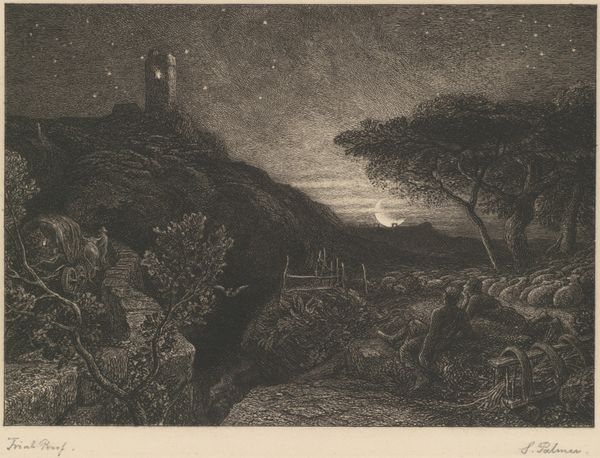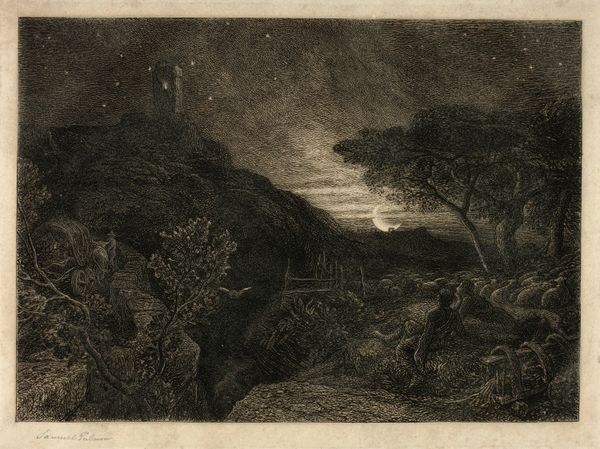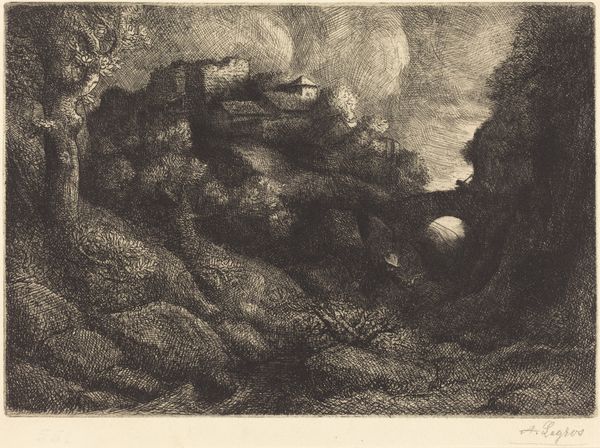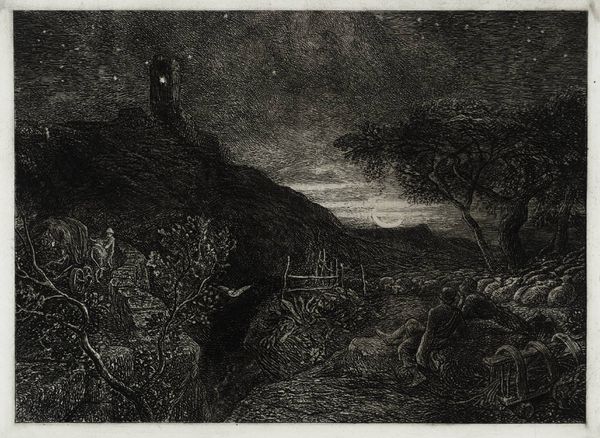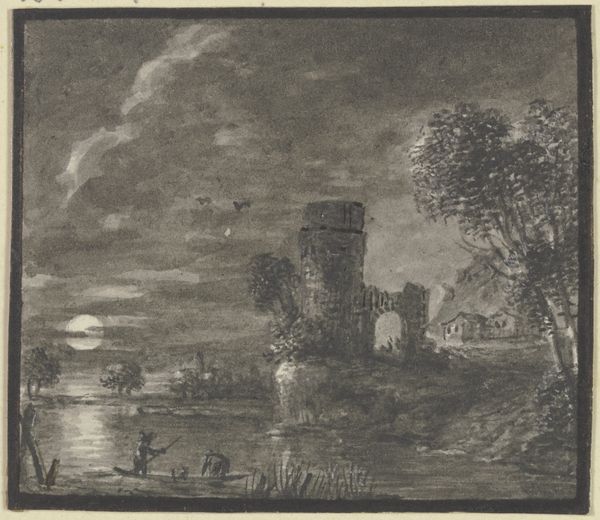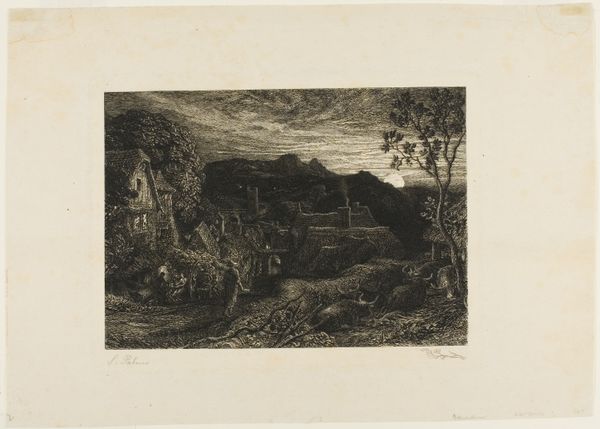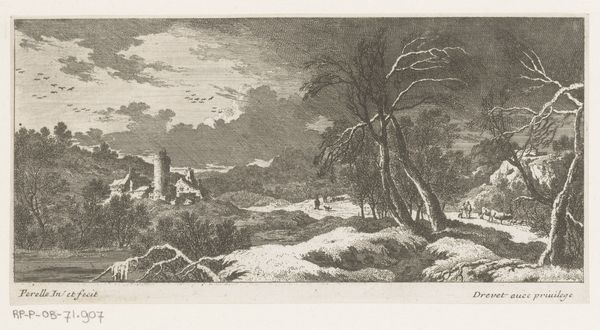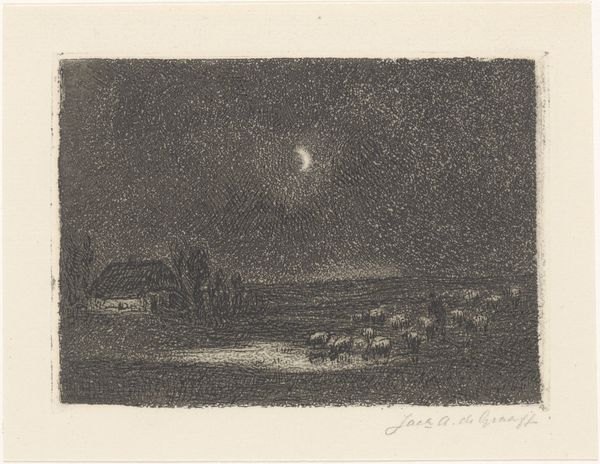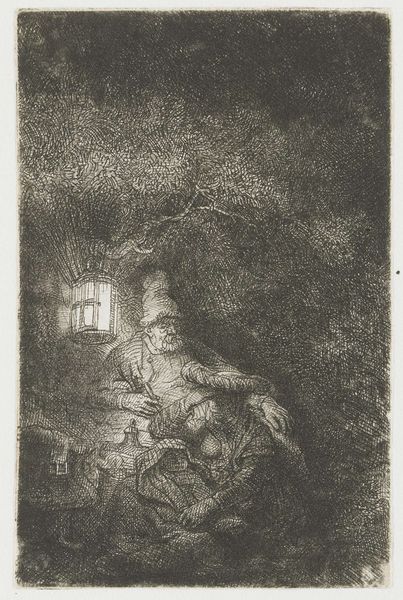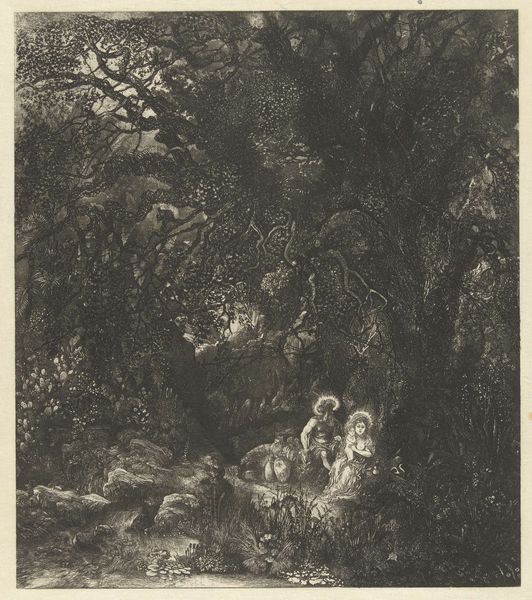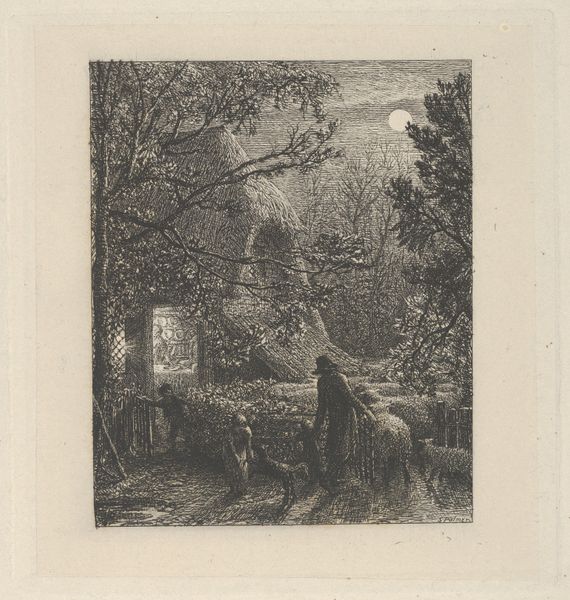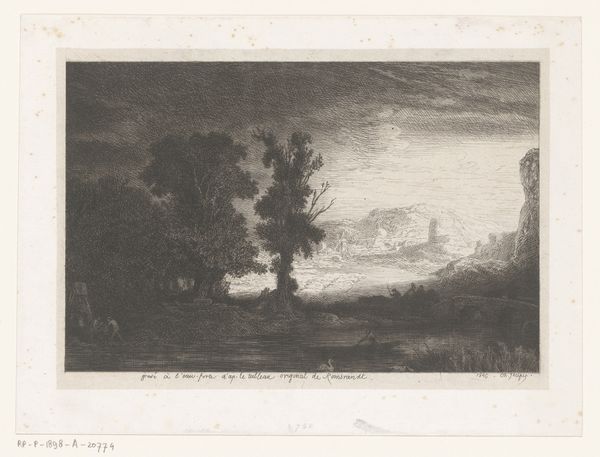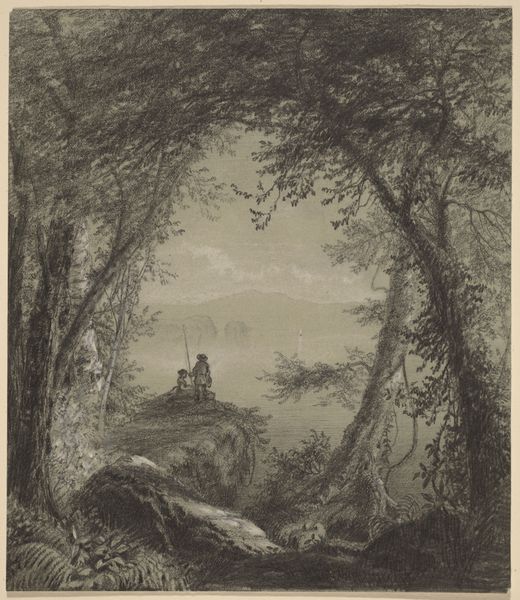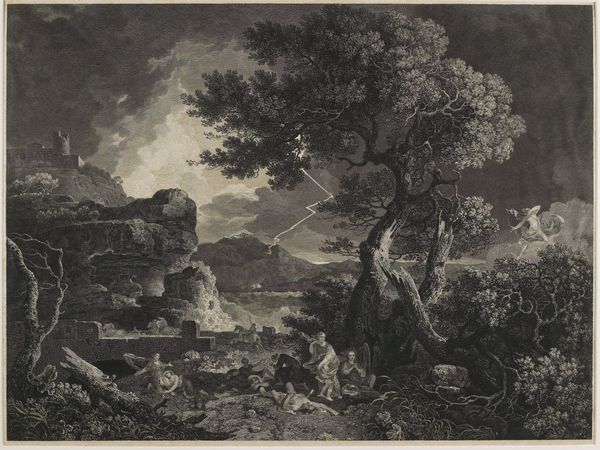
Dimensions: 7 5/8 x 10 1/16 in. (19.37 x 25.56 cm) (plate)
Copyright: Public Domain
Curator: What a haunting piece! All that deep shadow, those distant stars... I’m immediately drawn to its air of mystery and quiet melancholy. Editor: I agree, it's definitely evocative. We're looking at "The Lonely Tower," an etching created in 1879 by the English artist Samuel Palmer. It's currently held in the collection of the Minneapolis Institute of Art. I'm interested in Palmer's relationship with the Royal Academy at this point in his career. Curator: The tower itself feels like a stoic witness, overseeing centuries of human experience. The symbol of the tower speaks to history, but here it seems to represent a rather intimate history. What human drama, do you think, unfolded in its shadow? Editor: And I'm equally drawn to its position in art history, given the shifting perceptions of the pastoral in England at this time. While Romanticism largely embraced the natural landscape as spiritual and uplifting, "The Lonely Tower" presents nature, though beautiful, as perhaps indifferent to humanity's struggles. Curator: Indifference, yes. Perhaps even an implied threat, the looming dark space both invites the imagination and hides danger in its shadows. That brilliant crescent moon almost mocks the human figures nestled in the landscape. Editor: Precisely! We must also consider that Palmer, while celebrating rural England, was also influenced by socio-economic factors: agricultural depression, urban migration. Images like these reflect a collective yearning for a simpler, more stable past that was quickly fading away. Curator: And you can certainly feel that yearning. In our modern age of technological interconnectedness and rapid change, “The Lonely Tower” offers us a symbol of steadfast resilience, yet also underscores a kind of lonely human experience – that search for enduring truth against a backdrop of ceaseless change. Editor: True, and beyond the immediate socio-political commentary, art institutions' commitment to preserving such prints reinforces the enduring fascination with Romanticism's perspectives of the past. Samuel Palmer reminds us of art's public role in capturing these visions of human condition and culture. Curator: Thank you, a poignant look at "The Lonely Tower" indeed! Editor: A meaningful exploration; I concur!
Comments
minneapolisinstituteofart almost 2 years ago
⋮
Samuel Palmer was a rhapsodic sort who spent his youth in the English countryside absorbed in the writings of Keats, Milton, and Shakespeare, convinced of the mystical perfection of nature. His dreamy vision is evident in these etchings. The Lonely Tower, created to illustrate Milton's poem Il Penseroso, depicts travelers yearning toward a distant tower while an owl passes over the chasm between them. A painstaking printmaker, Palmer worked the plate tirelessly, subjecting it to fourteen separate bitings, or soakings in an acid bath, to etch the lines just so.
Join the conversation
Join millions of artists and users on Artera today and experience the ultimate creative platform.
